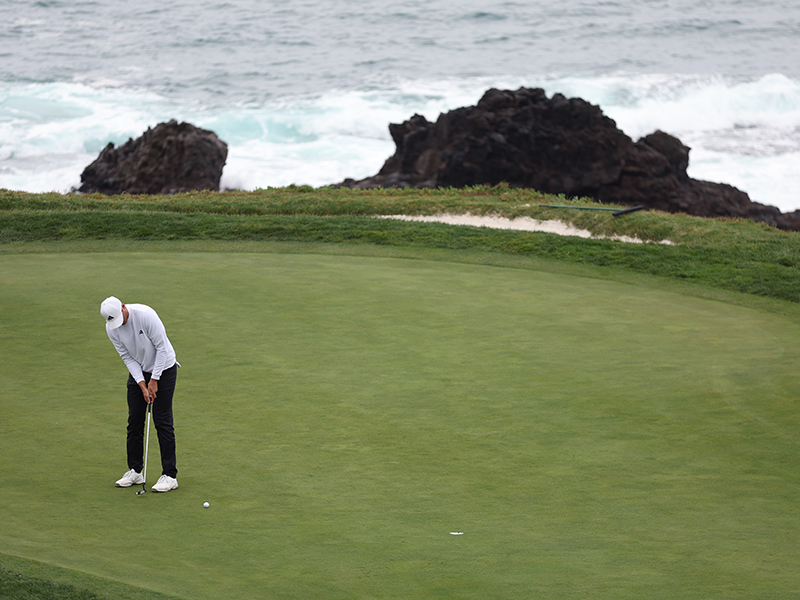
No matter where you play your golf around the world, it's likely that you have to at least occasionally deal with the full force of the elements. Calculating distance in the wind can be tricky, both from the tee and on approach, but attempting to hole a putt while being battered by the breeze is an altogether different challenge.
There are three key fundamentals to putting well when the wind gets up. Number one is stability – without it your stroke and strike will never really be consistent. The second is rhythm as wind can affect that; and finally distance control, which is vital on the long-range putts you’re more likely to face when the wind gets up and your approach proximity varies.
In this article, Golf Monthly Top 50 Coach Clive Tucker breaks down each of these aspects in more detail and shares his expert tips on putting well in the wind...
1. Stability Is King
Stability is the number- one priority in the wind, so I would recommend making your stance a little wider but with the ball in the same position relative to your front foot. Then place a little more weight on your left side so you’re firmly rooted. The more stable you can be at address, the easier it will be to maintain it when putting.
A good way to check your stability is to feed an alignment stick through your belt buckles and loops at the front. You can then see how much it moves about as you make your stroke. If it remains relatively still, you’ll know your shoulders are working from a very stable base.

2. Think 'One-And-Two'
Next up is rhythm. First, identify your normal rhythm, which you can do indoors or outside when it’s calm and warm. Mine would be a ‘one-and-two’ rhythm talking at normal speed – ‘one’ as I take the putter back; ‘and’ during the slight pause between backstroke and forward stroke; and ‘two’ as I actually make the stroke. Keep that in mind and you’ll be able to maintain a constant rhythm and putt better when being buffeted by the wind.

3. Distance Control Drill
This is a great drill to sharpen distance control in the wind. Put three tee pegs down in an arc beyond the hole a putter’s length away. Then take six balls and place them at five, seven, nine, 11, 13 and 15 paces from the hole, so around 15 to 45ft.
The goal is to see how many either go in or past the hole, but not beyond the tee pegs. You can even score it to make it more competitive – perhaps three for holing it, one for finding the scoring zone and minus one for being short or too long, which will also teach you to not leave anything short!
You can adapt this to suit whatever putts you’re finding most tricky – so, if you’re struggling downhill from distance, set it up on a downslope.
Want To Read More Expert Golf Tips?
The Golf Monthly archive is a gold mine of brilliant reads, documenting a journey through the history of golf dating back to our first issue in 1911. Take advantage of over 100 years of invaluable tips from the best tour professionals and coaches in world golf, by subscribing to the online Golf Monthly Archive.







